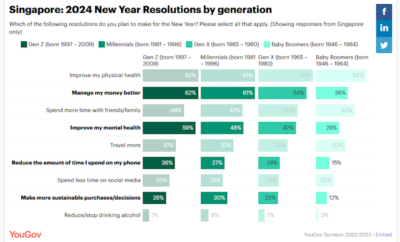
Health x Wellness
In Conversation With Dr Kevin Tan about Diabetes
Dr Tan shares with us more about diabetes and how we can prevent it.
Diabetes is recognised as the world’s fastest growing chronic condition, and the number of people with type 2 diabetes is growing in each country and that is staggering. And in 2015, diabetes caused approximately 5 million deaths globally. In fact, most diabetics find themselves helpless, with no idea about how to reverse their condition. What even more disconcerting is that more than half of those with type 2 diabetes aren’t even aware that they have diabetes. Read on to find out more about this ailment.
AA: Hi Dr Tan, for starters could you briefly describe diabetes?
DT: Diabetes is a chronic condition that occurs when either the pancreas does not produce enough insulin, a hormone that regulates blood sugar, or when the body cannot effectively use the insulin it produces. This results in high blood sugar which overflows in the urine resulting in high urine sugar.
AA: What are the disease’s first symptoms and what complications and health problems can it cause?
DT: Diabetes for many people is ‘unseen and unfelt’ and that is the biggest danger – that it may remain undetected for years before being discovered by a routine blood sugar check. However, the symptoms of diabetes when they occur are excessive thirst, increased urination, fatigue, weight loss, vision loss, slow hearing of wounds and sores and pain and numbness on your hands and feet. As a result of diabetes remaining undetected for years, some people may present with the complications of long-standing uncontrolled diabetes. These can also happen if a person does not control his diabetes condition over years. Such complications include heart attack and stroke (cardiovascular disease), nerve, eye, foot and kidney damage and even Alzheimer’s disease. It is also important to note that cardiovascular disease has been known to be responsible for 50% of deaths in patients with Type 2 diabetes globally. Here are more facts:
Excessive thirst and increased urination – Diabetes can cause an increase in the frequency of urination. This is because your kidneys would have to work harder to filter and absorb excess sugar in your blood. If they cannot keep up, the excess sugar will be excreted in your urine. This causes you to urinate more and increases the possibility of feeling dehydrated. Furthermore, as you drink more to hydrate yourself, you tend to urinate more as well.
Weight loss – Sugar is lost in the urine and this translates to calorie loss and hence weight loss.
Fatigue – With blood sugar rising and sugar not being able to enter cells and tissue to provide energy, the person with diabetes feels tired.
Blurred vision – Fluctuations of blood sugar can cause fluid to pull away the lens of the eye, decreasing its ability to focus and this leads to trouble focusing and hence blurring of vision. Long term poor diabetes control leads to leaky blood vessels at the back of the eye (the retina) and over time can lead to loss of vision and blindness.
Slow healing of wounds and sores – Diabetes can cause a decrease in the healing rate of wounds and sores. This may be due to the impact of high blood sugar level on your body’s ability to fight infections.
Pain or numbness on your hands and feet – High blood sugar level can also cause nerve damage. This is manifested as numbness or a tingling sensation in your hands and feet. There may sometimes be cramps and pain starting in the hands and feet.
AA: What’s the difference between type 1 and type 2 diabetes, and which one is hereditary?
DT: Type 2 diabetes is the more common form of diabetes, accounting for over 90% of diabetes. It is strongly hereditary with the environmental factor of obesity from a sedentary lifestyle and excessive calorie intake, as well as age tipping the scale towards diabetes. Type 1 diabetes is also brought about by a combination of genetic factors and a variety of environmental factors. Type 2 diabetes is managed by lifestyle modification (diet, losing weight if overweight and regular exercise and physical activity) together with oral medication and sometimes insulin injections. Weight loss or bariatric surgery has been shown to improve control of Type 2 diabetes sometimes achieving close to a cure for it. Type 1 diabetes requires multiple insulin injections in a day or else a continuous insulin delivery device (insulin pump) to keep blood sugar at an optimal level. In certain parts of the world, Insulin delivery can be achieved through an inhaled device. Insulin has to be matched to a proper diet and regular exercise or physical activity.
The three main types of diabetes are:
Type 1: The pancreas is progressively destroyed by an attack by the body’s immune system (autoimmune). This leads to insufficient insulin in the body and the person has to self-give insulin by injections to manage his/her blood sugar level.
Type 2: Results from the body’s ineffective use of insulin. Type 2 diabetes is more prevalent (90% of people with diabetes around the world) and is on the rise due to rising prevalence of obesity brought about by excessive eating and a sedentary lifestyle. This type of diabetes can be managed by diet and lifestyle changes, oral medication and sometimes insulin injections.
Gestational: This is defined as diabetes first occurring during pregnancy usually after the six months (24 weeks) of pregnancy. It reflects the woman’s potential in having diabetes. Most disappear after delivery, only to return in subsequent pregnancies and in future life. It has repercussions to baby as well, both during pregnancy if the mother’s blood sugar is high and in the baby’s future life. Management of gestational diabetes requires home blood sugar monitoring, meal planning and sometimes insulin injections.
AA: Do you feel that it is difficult to create awareness about diabetes among people?
DT: Awareness is easier when there is a personal experience with diabetes and its much feared complications and this is usually in the context of having a close family member living with diabetes or suffering from it. On the other hand, awareness is harder to grasp without this personal experience. Awareness of the need to prevent diabetes-related complications is made even more difficult as diabetes in the most part is ‘unfelt’ and ‘unseen’ and the control of diabetes requiring lifestyle changes and changes to the diet can be difficult to accept and implement .
AA: What can ordinary people like me do in order to prevent diabetes?
DT: Ordinary people can help prevent or delay diabetes by staying active and keeping a healthy lifestyle. This includes losing some extra weight, having a healthy diet and adopting a regular exercise routine. A combination of these would help to maintain blood sugar levels. A healthy diet includes foods that are high in fiber such as fruits, vegetables, nuts, beans, seeds and whole grain. These ingredients are known to have the potential to reduce the risk of diabetes and improve blood sugar control. It also helps to control weight gain by helping you to feel fuller after the meal. People who are older than 40 years old can consult a doctor to check if they need to be tested for diabetes. If you are 40 years old and overweight, you should consult a doctor for a blood glucose screening. Those younger than 40 years old, who are overweight and have risk factors for type 2 diabetes, should consult a doctor and share their concerns with him.
AA: Would you encourage people to go and have their blood sugar level checked?
DT: The recommendations by national guidelines are that persons above 40 years of age should have regular blood sugar checks. If there are risk factors for diabetes (eg. overweight, family history, hypertension and cholesterol problems), then screening with blood sugar checks should be done at an earlier age.
AA: What other checks do people with diabetes need?
DT: A diabetic patient should consult his doctor every three to six months. This includes going for blood pressure, weight and feet checkups. Additionally, he should also have a dental checkup every six months. In foot examinations, your doctor should check for pulses and test your reflexes. Foot examinations should also include checks for the development of wounds, infections, calluses and numbness in any part of your feet. On top of this, a diabetic patient can also go for eye checkups to detect any problems that occur. People with diabetes can also take the haemoglobin A1c test to measure their blood sugar level and the cholesterol test to measure their blood cholesterol and tryglycerides level. Cardiovascular disease is known to be responsible for 50% of deaths in patients with Type 2 diabetes globally and so diabetics should also monitor their heart health.
In the past, diabetes tablets could actually work against a person who is trying to lose weight and have the opposite effect. There is now a new class of diabetes medication called SGLT-2 inhibitors that help you pass out excess sugar through your urine and lose up to 100 g of glucose or 400 kCal a day. In fact, a recent clinical trial, called EMPA-REG OUTCOME, showed that a diabetes treatment drug was able to reduce cardiovascular risk reduction significantly. More specifically, it reduced cardiovascular deaths by a third, reduced all-cause mortality by 32% and reduced hospitalization for heart failure by 35%. Therefore, diabetics should work with their doctor to keep a look out of new kinds of drugs that can help manage their disease better.
Ed’s Note – World Diabetes Day is celebrated on November 14 each year. This day engages millions of people worldwide in diabetes advocacy and awareness activities in response to growing concerns about the escalating health threat that diabetes now poses globally. World Health Day on 7 April 2016 will also be dedicated to raising awareness about diabetes.
Global statistics
Almost 600 million of us may be living with diabetes by 2035.
In 2015, the International Diabetes Federation’s (IDF) Diabetes Atlas estimates that:
1. One in 11 adults has diabetes (415 million)
2. One in two (46.5%) adults with diabetes is undiagnosed
3. 12% of global health expenditure is spent on diabetes (USD673 billion)
4. One in seven births is affected by gestational diabetes
5. Three-quarters (75%) of people with diabetes live in low- and middle-income countries
6. 542,000 children have type 1 diabetes
7. Every six seconds a person dies from diabetes (5.0 million deaths)










